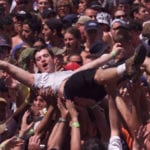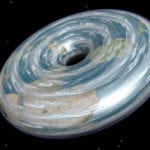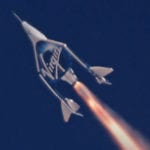 Weird Stuff
Weird Stuff  Weird Stuff
Weird Stuff  Mysteries
Mysteries 10 Tragic Disappearances and Deaths in Joshua Tree National Park
 History
History 10 Ways Childhood Really Sucked in the Old West
 Music
Music 10 Name Origins of Famous Bands from the 1990s
 Religion
Religion 10 Biggest Turnarounds by the Catholic Church
 Weird Stuff
Weird Stuff 10 Unbelievable Times Laws Had Unintended Consequences
 Humans
Humans Ten Historic Women Who Deserve Way More Credit Than They Got
 Movies and TV
Movies and TV 10 Films That Spawned Major Lawsuits
 History
History Ten Times Towns Were Wiped Off the Face of the Earth
 Creepy
Creepy 10 of the Most Disturbingly Haunted Public Houses in the UK
 Weird Stuff
Weird Stuff 10 Niche Subcultures That Are More Popular Than You Might Think
 Mysteries
Mysteries 10 Tragic Disappearances and Deaths in Joshua Tree National Park
 History
History 10 Ways Childhood Really Sucked in the Old West
Who's Behind Listverse?

Jamie Frater
Head Editor
Jamie founded Listverse due to an insatiable desire to share fascinating, obscure, and bizarre facts. He has been a guest speaker on numerous national radio and television stations and is a five time published author.
More About Us Music
Music 10 Name Origins of Famous Bands from the 1990s
 Religion
Religion 10 Biggest Turnarounds by the Catholic Church
 Weird Stuff
Weird Stuff 10 Unbelievable Times Laws Had Unintended Consequences
 Humans
Humans Ten Historic Women Who Deserve Way More Credit Than They Got
 Movies and TV
Movies and TV 10 Films That Spawned Major Lawsuits
 History
History Ten Times Towns Were Wiped Off the Face of the Earth
 Creepy
Creepy 10 of the Most Disturbingly Haunted Public Houses in the UK
10 Dramatic Space Missions That Narrowly Avoided Disaster
There have been a few notable fatalities in the history of manned spaceflight, two famous examples being the destruction of the space shuttles Challenger and Columbia. Though fatal incidents have been few, the number of spaceflights which could have resulted in fatalities is much higher. These 10 manned missions to space had a very good chance of leaving their crew dead, but in all of them, the astronauts escaped in the nick of time.
10Soyuz 33
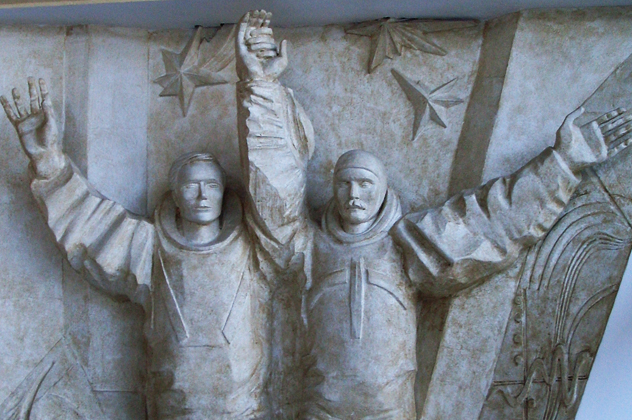
On April 10, 1979, the Soyuz 33 capsule blasted off carrying two crewmen to the Soviet Salyut 6 space station. The crew included the first Bulgarian astronaut, Georgiy Ivanov, and a Russian, Nikolay Rukavishnikov. However, on final approach to the space station, the main engine of the Soyuz malfunctioned, shaking the entire spacecraft as it fired unevenly. A second attempt to fire the engine also failed, and the crew were told to sleep while the problem was analyzed.
Rukavishnikov, however, could not fall asleep. He was concerned that the firing of the main engine might have damaged the backup engine. If that happened, the spacecraft would be stuck in orbit and unable to attempt reentry, trapping the cosmonauts in space. The Soyuz capsule was designed to naturally deorbit 10 days later, but there was only enough oxygen available for five days, meaning the cosmonauts would have asphyxiated well before then.
In the end, the backup engine did fire but for 25 seconds too long, resulting in a steep trajectory and ballistic reentry, subjecting the cosmonauts to 10 g. Both crewmen were safely recovered, bringing an end to the harrowing mission.
9Soyuz T-10-1
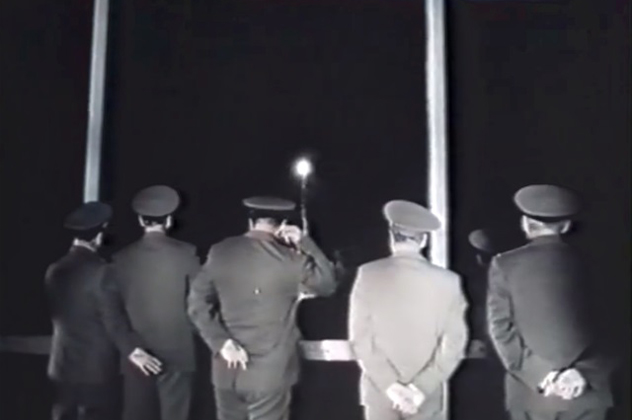
On September 26, 1983, commander Vladimir Titov and flight engineer Gennady Strekalov prepared to be shot into orbit on Soyuz T-10-1 in order to dock with the Soviet Salyut 7 space station. Ninety seconds before the Soyuz rocket was to launch, however, a valve in a rocket engine malfunctioned, spilling fuel onto the launchpad. The fumes ignited, engulfing the rocket in flames. This wasn’t necessarily a problem for the cosmonauts, however—their capsule was designed be lifted free of the burning rocket by a rocket-powered escape tower.
Except for one problem: The tower failed to fire. The fire had burned through the wiring that would have automatically activated the system, leaving the two cosmonauts on top of a burning rocket that could blow up at any second. The only way to fire the escape tower now was for two technicians in two separate rooms in mission control to press two buttons at the same time. By the time the buttons had been pressed, 10 crucial seconds had elapsed.
The escape tower fired in the nick of time. Just a few seconds after the cosmonauts rocketed away to safety, the rocket collapsed in flames onto the launchpad. Titov and Strekalov were swearing so much they had shut off the cockpit voice recorder as soon as they escaped. When recovery teams reached their landing site 30 minutes later, the cosmonauts requested cigarettes and vodka to calm their nerves.
8Apollo CSM-111

On July 17, 1975, an American Apollo spacecraft docked with a Soviet Soyuz spacecraft in orbit, marking the first international manned spaceflight. After undocking on July 19, the Soyuz spacecraft made an uneventful landing in Russia. The Apollo spacecraft, however, was not so lucky. Just minutes before splashdown in the Pacific, the three Apollo crew members noticed a yellow gas in the capsule that irritated their eyes and sent them into coughing fits—it was highly toxic nitrogen tetroxide, a chemical used as a propellant that’s lethal if inhaled in large doses. Compounding the issue, the capsule flipped over upon landing, trapping the crew members. The crew scrambled for the oxygen masks, and one of the astronauts had already fainted by the time Thomas Stafford managed to reach them.
Stafford eventually activated the mechanisms to right the capsule and vent the cabin of the gas. The crew ended up in the hospital for two weeks. Though the results were nearly fatal, all of the astronauts had a full recovery. It was later determined that an astronaut had failed to flip a switch during final checks before reentry, leaving a valve open that vented the lethal gas into the capsule.
7Liberty Bell 7
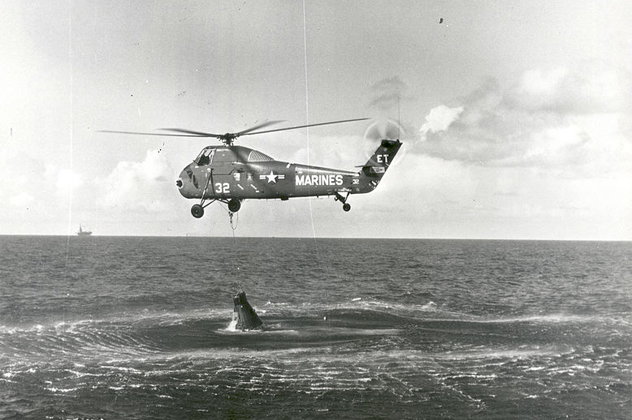
The second manned US spaceflight, Mercury-Redstone 4, or Liberty Bell 7, was launched on July 21, 1961. Gus Grissom, who was to be the second American in space, had a normal flight without issues. The splashdown, however, was more dramatic. The exit hatch blew prematurely, flooding the spacecraft. Grissom nearly drowned but managed to escape the capsule.
The recovery helicopter tried in vain to lift the spacecraft for a few minutes before abandoning the effort and letting the capsule sink. Grissom struggled to stay above water, but he had accidentally left a valve open in his suit, allowing water to leak in and make the suit heavier. By the time the helicopter reached him, Grissom was so exhausted that he did not even remember the helicopter lifting him out of the water.
Worse was to come for Grissom. At the first post-mission press conference, journalists grilled him on whether he had panicked and blown the exit hatch, contributing to the loss of the spacecraft and his near-drowning. Grissom steadfastly denied the accusations until his death in the Apollo 1 fire in 1967.
6Voskhod 2
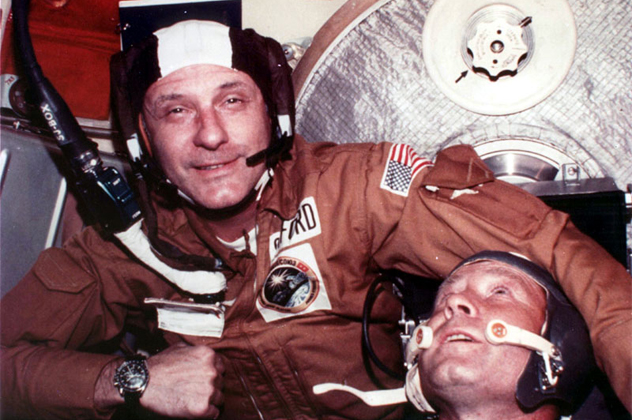
On March 18, 1965, cosmonaut Alexei Leonov donned a space suit and left his Voskhod 2 spacecraft, becoming the first man to perform an extra-vehicular activity, or spacewalk. Hailed as another Soviet space first in a long line of firsts, this narrative did not mention that the first spacewalk in history almost ended in death . . . several times.
While the exit and spacewalk itself were uneventful, upon attempting to reenter his capsule, Leonov realized that his spacesuit had ballooned in vacuum, making it impossible for him to reenter the airlock feet-first. Instead, he would have to enter head-first, and even then he would have to let some air out of his suit to accomplish this. It was a worrying setback: If didn’t get inside in the next 40 minutes, he would asphyxiate. His body temperature was also rising dangerously due to the exertion. Leonov was barely able to squeeze into the airlock before he ran out of air. But Leonov’s troubles were far from over.
Upon reentry, a rocket malfunction left Leonov and his fellow crew member trapped thousands of kilometers from help in Siberia. To make matters worse, the forest they had landed in was teeming with wolves and bears, and the animals were particularly aggressive because it was the height of mating season. In the freezing cold weather, the cosmonauts also had to strip and pour accumulated sweat out of their spacesuits to prevent frostbite. After a grueling night in these conditions, they were saved the next day when rescuers arrived with supplies and tents.
5Soyuz 5
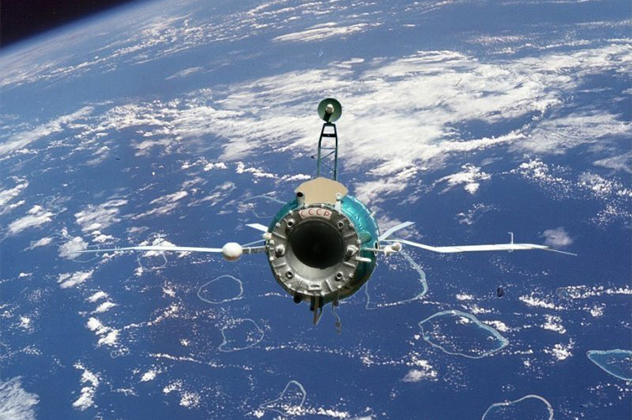
Soyuz 5 was launched with three cosmonauts on January 15, 1969. It docked with Soyuz 4 two days later, leading up to the first spacewalk involving two astronauts. After undocking, Soyuz 4 reentered and landed normally. Soyuz 5, however suffered a near-fatal incident during reentry.
After the deorbit burn, the Soyuz 5 reentry capsule, which had survived the heat of reentry, failed to separate from the orbital module. This caused the spacecraft to reenter in the wrong direction, with a hatch instead of the heat shield facing forward. When the rubber in the forward hatch seals began to burn, the cosmonauts were sure they would die. But luck was on their side. As g-forces increased, the oscillations and the temperature caused the orbital module to shake loose and the reentry module immediately righted itself, saving the cosmonauts from a fiery fate.
To add injury to insult, the parachutes tangled during landing, which could have been fatal to the cosmonauts. Again, luck intervened: The parachutes untangled just in time, although the landing was so hard that one of the cosmonauts broke his teeth.
4Apollo 13
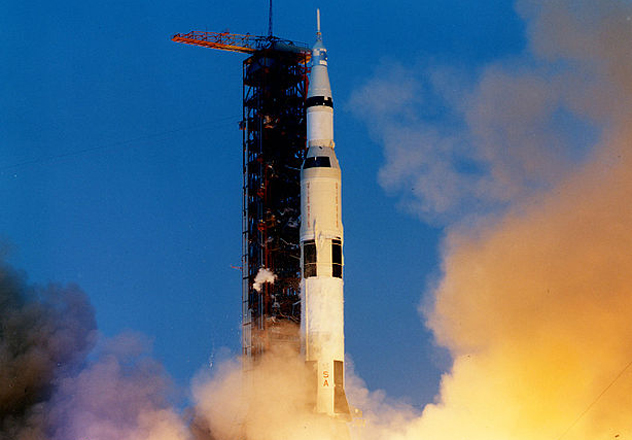
The Apollo 13 incident is well known as a dramatic disaster overcome through ingenuity and innovation. What is less well known is that the Saturn V rocket which launched the mission nearly failed. The cause was a phenomenon known as a pogo oscillation, which is a repetitive, self-reinforcing vibration caused by liquid-fueled rocket engines under certain situations.
The oscillations occurred when the second stage of the rocket was firing. While pogo oscillations had occurred on previous Apollo missions, on Apollo 13, the oscillations were much stronger than expected. The force of them exceeded the range of measuring instruments before an automated command shut the central engine down, stopping the pogo oscillations. A post-flight investigation estimated that the rocket was only one more oscillation cycle away from catastrophic structural failure, which would have put a dramatic end to the mission before Apollo 13 was even in orbit. A pogo suppressor, designed to muffle the oscillations, was installed on all subsequent Apollo flights.
3Gemini 6A
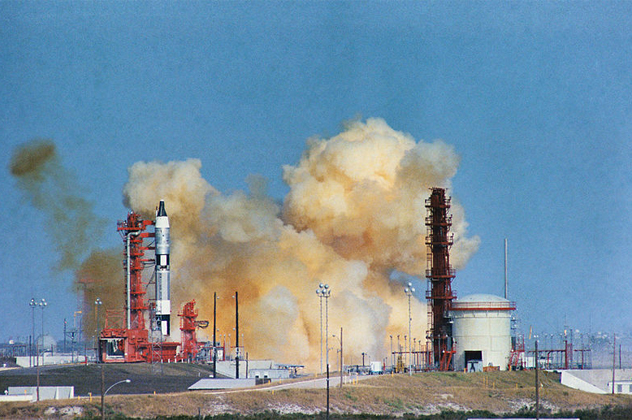
On December 12, 1965, the Gemini 6A capsule was supposed to blast off and rendezvous with Gemini 7, conducting the first docking in space. However, the launch of Gemini 6A was interrupted when their Titan II rocket shut down 1.2 seconds after engine ignition. The astronauts had been given orders to eject from their spacecraft if the engines cut off, as rising even a few inches from the launchpad would have brought the rocket toppling down. The ejection seats were equally risky, however. The extremely high acceleration used to throw the astronauts clear of the capsule could easily lead to their deaths. Dummies had been used in tests of the ejection seats. In several of the tests, the hatches had failed to blow off and the dummies had been slammed head-first into the closed hatch at 20 g of acceleration.
It took a steady hand under unbelievable pressure to keep the astronauts from firing the ejection capsule. Having felt no acceleration, they guessed correctly that the Titan had not risen off the pad. The launch was scrubbed and Gemini 6A launched successfully three days later.
2Vostok 1
The first manned spaceflight, Vostok 1, launched on April 12, 1961. Carrying cosmonaut Yuri Gagarin, it completed one orbit of the Earth before the automated systems fired the retro-rockets to return to Earth. However, while the orbit itself had been uneventful, the reentry was fraught with peril. Gagarin’s reentry module failed to separate from the service module because a single bundle of wires refused to come loose. The entire spacecraft began gyrating as it fell to Earth, and Vostok’s fragile forward hatch was subject to the heat of reentry.
Fortunately, the wires burned through 10 minutes later and the two modules separated. Gagarin experienced significant deceleration forces and continuing gyrations but remained conscious, ejecting and landing safely. The mission was uncertain in more ways than one. Vostok had been placed in a higher orbit than planned, which was dangerous because if the retro-rockets had failed then Gagarin would have been stranded in orbit beyond the limits of his food and oxygen supply (which was only enough for 10 days). And as no one had ever been in space before, mission planners genuinely feared that a man could go crazy in space. Because of that, they locked Gagarin out of the spacecraft’s controls but still allowed him access in an emergency.
1STS-1
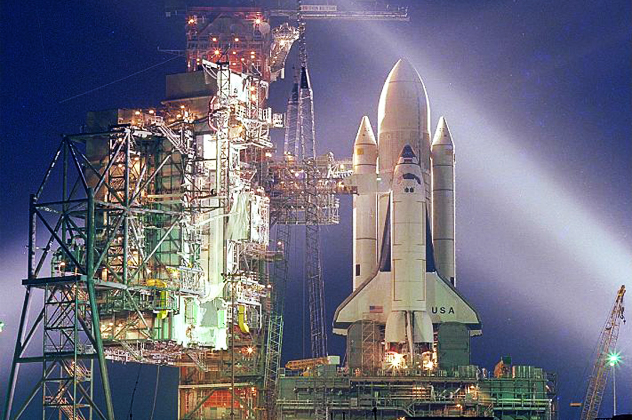
Although the loss of the Challenger and Columbia shuttles are well known, what is not conventional knowledge is that the first space shuttle mission, STS-1, was exceedingly dangerous. On April 12, 1981, 20 years to the day after the launch of Yuri Gagarin, the Columbia blasted off. However, upon reaching orbit and opening the payload bay, the astronauts on board were greeted by the sight of missing heat-resistant tiles on the rear of the orbiter. This raised serious concerns that tiles underneath the shuttle were also missing, which would have caused the breakup of Columbia on reentry 22 years early. But while many of those tiles actually were missing, the shuttle landed safely.
This was not the only issue during the mission, not by far. An overpressure wave from the solid rocket boosters caused a control flap on the orbiter to be extended more than its design tolerances, which shuttle designers predicted would have made the spacecraft uncontrollable on reentry. The designers were wrong, but the crew was unaware of the supposedly fatal damage until after they had landed.
When NASA conducted a safety study on the shuttle 25 years later, they found that the chance of failure of each of the first nine shuttle flights was one in nine. A chance of death greater than 10 percent is nothing to sneeze about, especially as NASA had originally pegged the chance of failure as 1 in 100,000.
Mark Chen is an Internet aficionado primarily interested in current and recent conflict occurring across the globe, with a dash of economics and technology thrown in for good measure.
